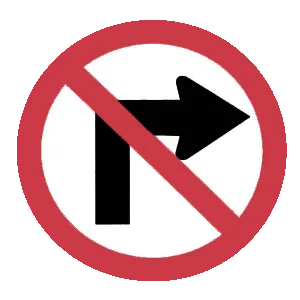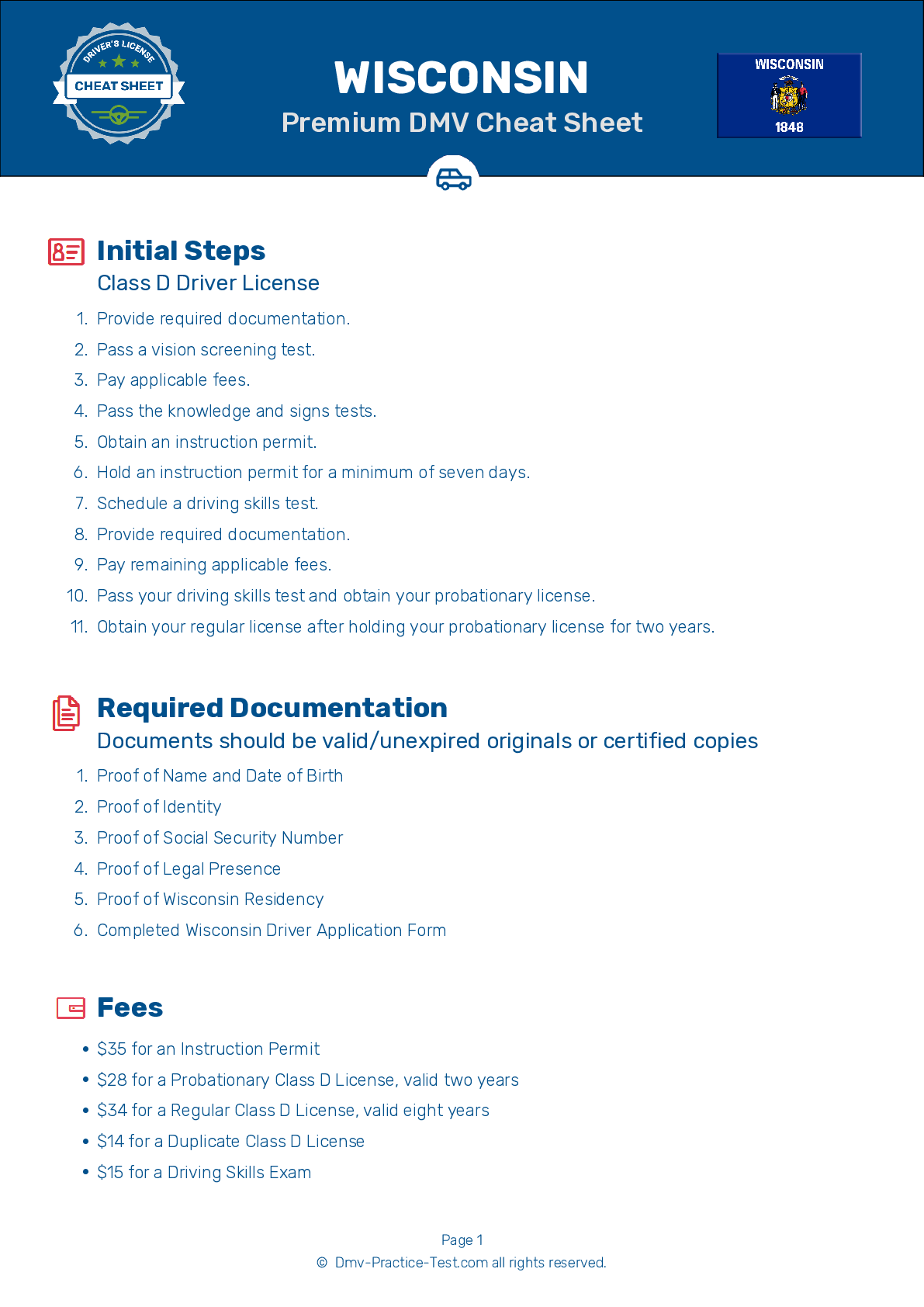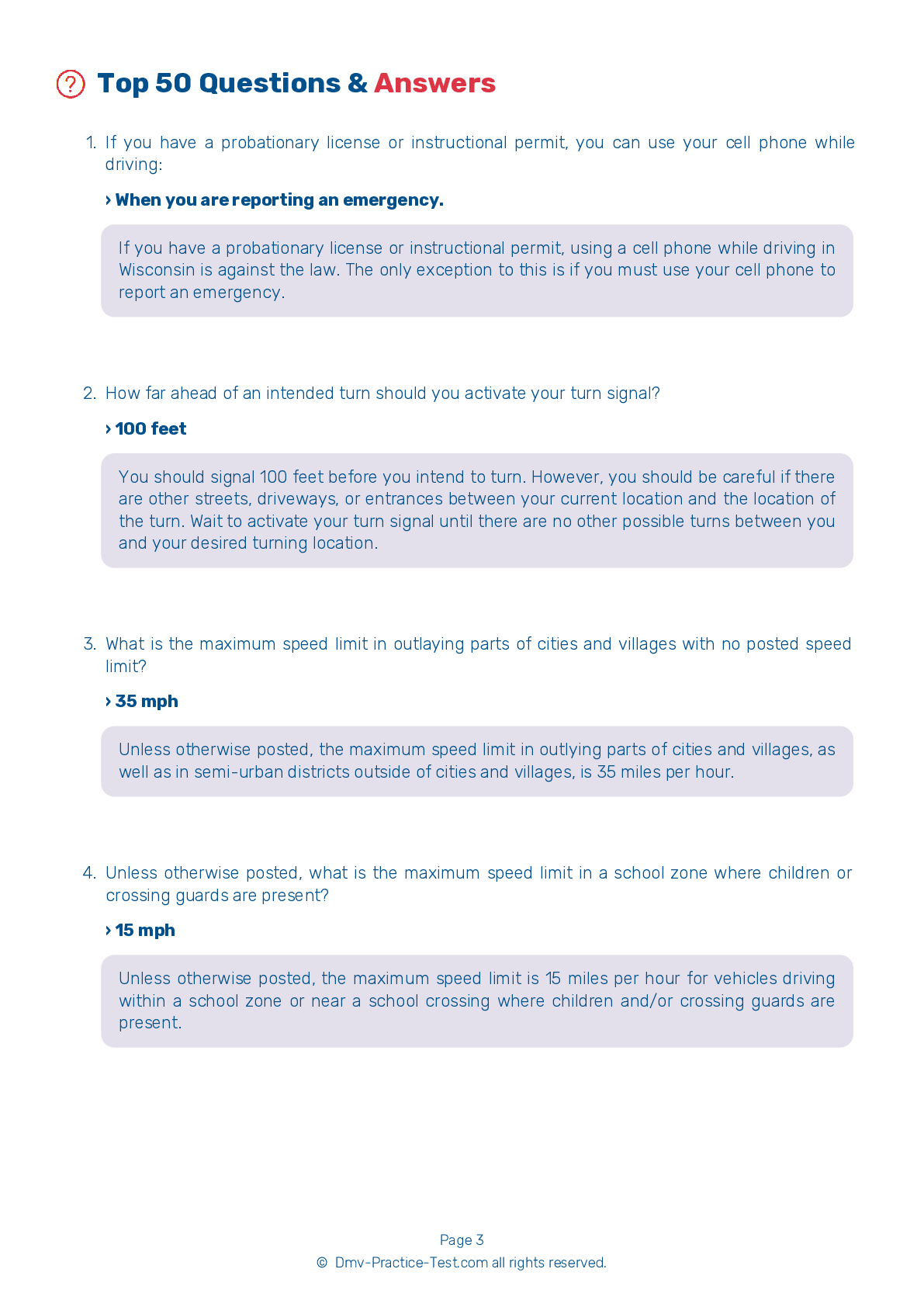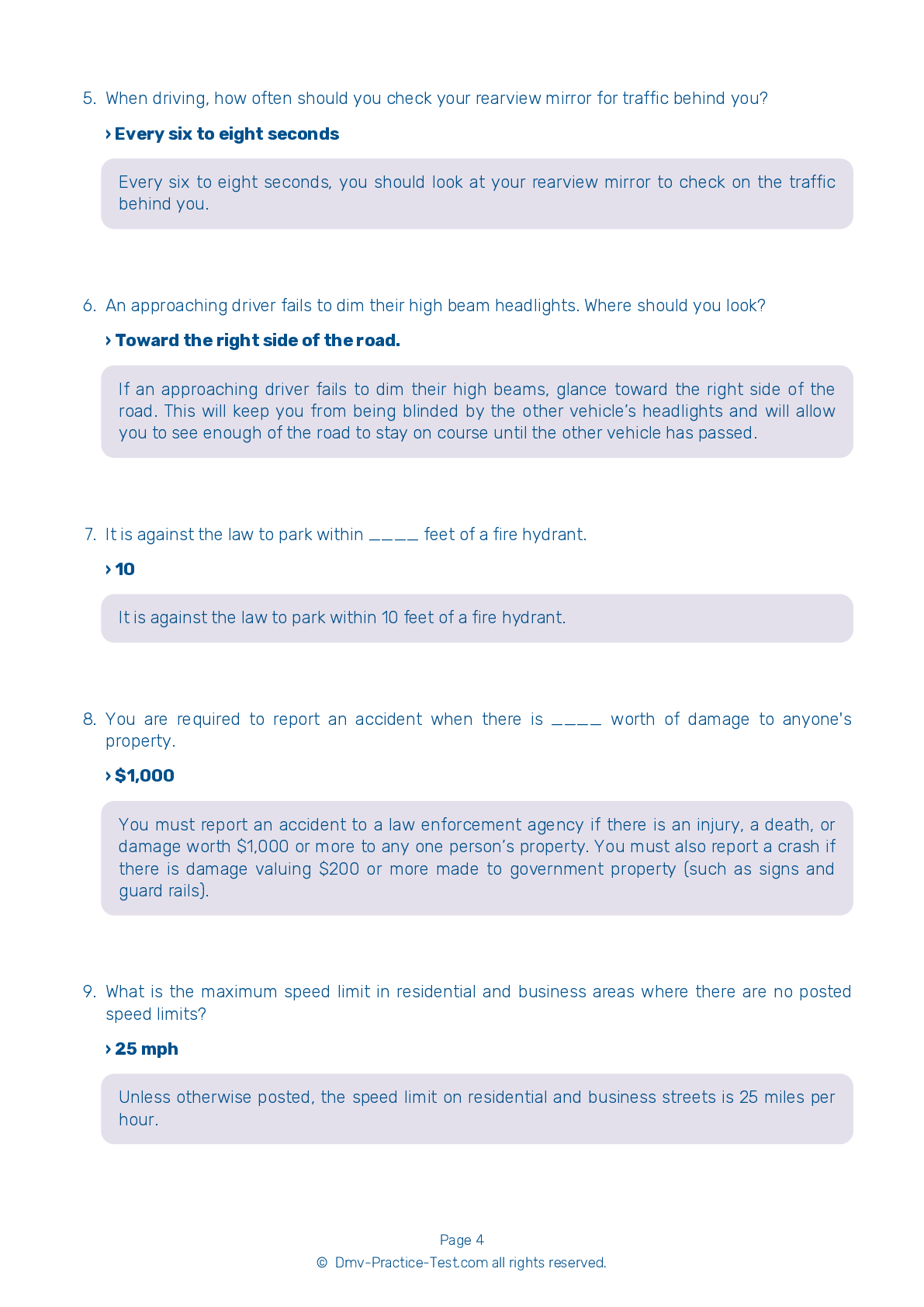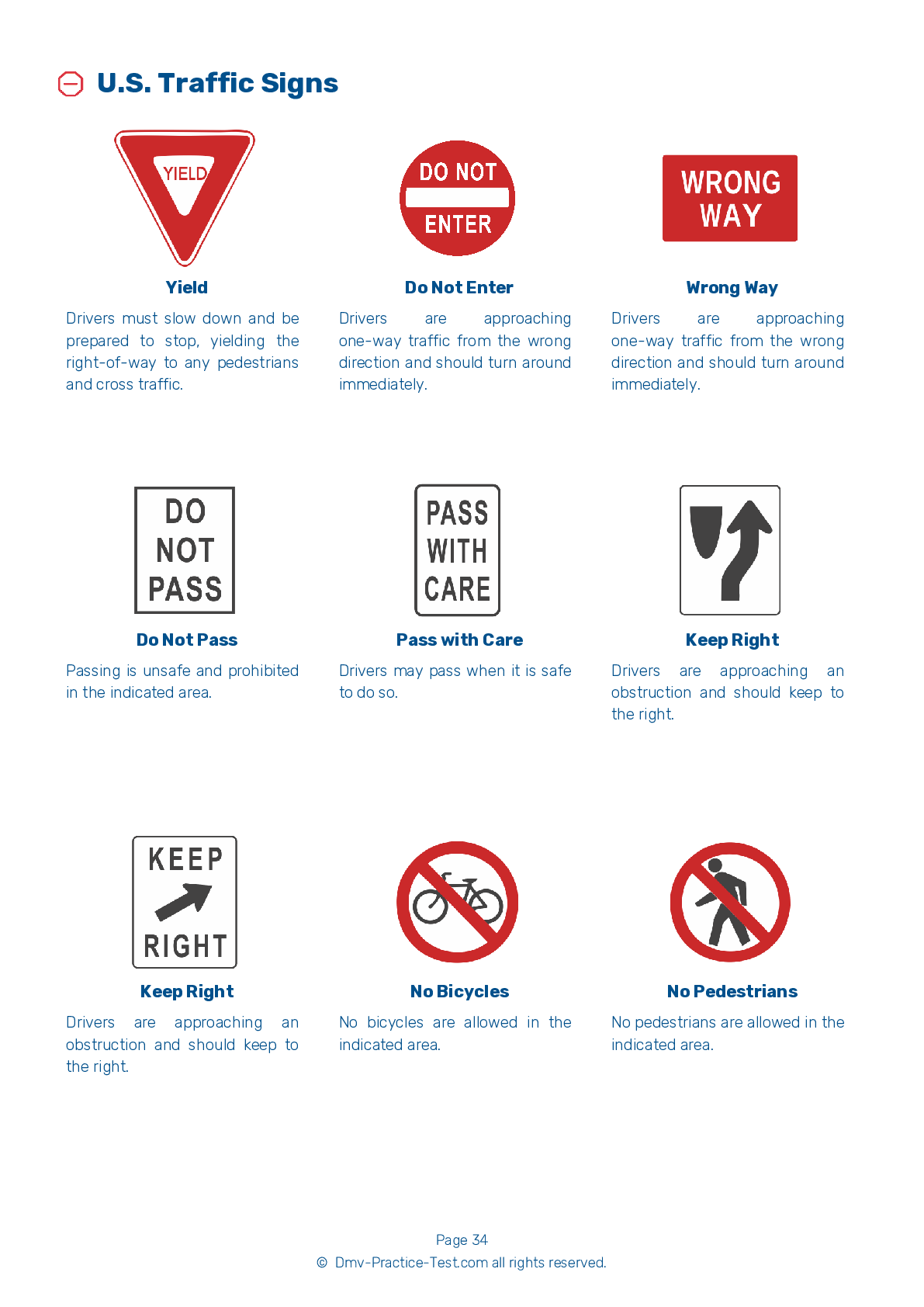FREE Wisconsin DMV Practice Test #20
The Wisconsin DMV practise examinations have been updated for January 2025. It includes questions based on the Wisconsin Driver Handbook's most significant traffic signals and legislation for 2025. Use actual questions that are very similar (often identical!) to the DMV driving permit test and driver's licence exam to study for the DMV driving permit test and driver's licence exam.
On the practise exam, each question gets a tip and explanation to help you remember the concepts. The written component of the official Wisconsin DMV test will include questions about traffic rules, traffic signs, and driving statutes, as well as knowledge from the Driver Handbook.
To obtain a passing grade, you must correctly answer 40 of the 50 questions. Use the practise exam provided by the Wisconsin Department of Motor Vehicles to help you prepare for your instruction permit or driver's licence.
The DMV exam is available in several languages.
Using any kind of testing assistance will result in an automatic fail, and the DMV may take additional action against your driver's licence, so stay away from it.
1 . Water on the road can cause a vehicle to hydroplane. Your car may hydroplane at speeds as low as:
Hydroplaning occurs when there is standing water on a roadway. At speeds up to 35 mph, most tires will channel water away from the tire. As your speed increases past 35 mph, tires cannot channel the water as well and your tires may start to lose contact with the road and ride over the water like a set of water skis.
3 . If a road is slippery, maintain a following distance that is:
You need a longer distance to stop your vehicle on a slippery road than you do on a dry road. Maintain an increased following distance when driving on slippery roads.
4 . Pentagonal signs indicate:
Pentagonal signs indicate that you are in a school zone. Be extra alert to children and pedestrians when driving near a school.
5 . This sign means:
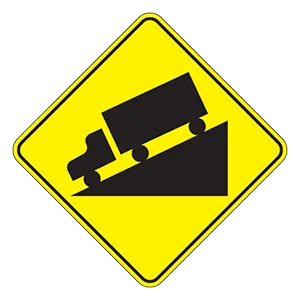
This sign warns that a steep downgrade is ahead on the road. Drivers should check their brakes.
6 . When approaching a steady red traffic light, drivers should:
A steady red traffic light indicates that drivers must come to a complete stop. Driving through a red light is against the law and is extremely dangerous. Drivers may turn right on a steady red light if there is no sign prohibiting a turn on red.
7 . To prevent yourself from becoming an aggressive driver:
To prevent yourself from becoming an aggressive driver, concentrate on driving and don't take the actions of other drivers personally. Be realistic about your travel time, drive within posted speed limits, and be forgiving of other drivers using the roadway.
See the exact questions that will be on the 2025 Wisconsin DMV exam.
99.2% of people who use the cheat sheet pass the FIRST TIME
LT gives us an insight on how the cheat sheet provided her with all the study questions she needed before taking her test.
Joe initially studied with the handbook and failed his test, he eventually found us online, studied and pass his test the first time around.
